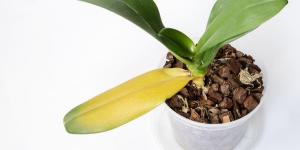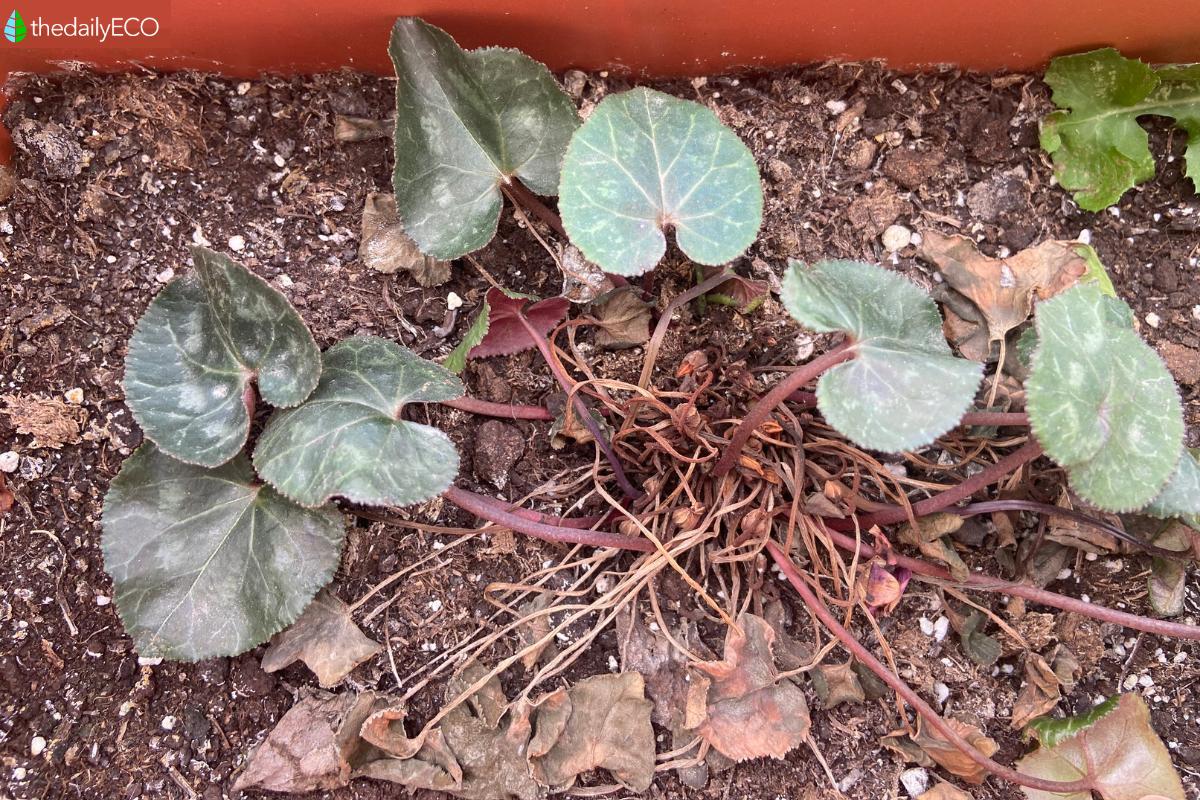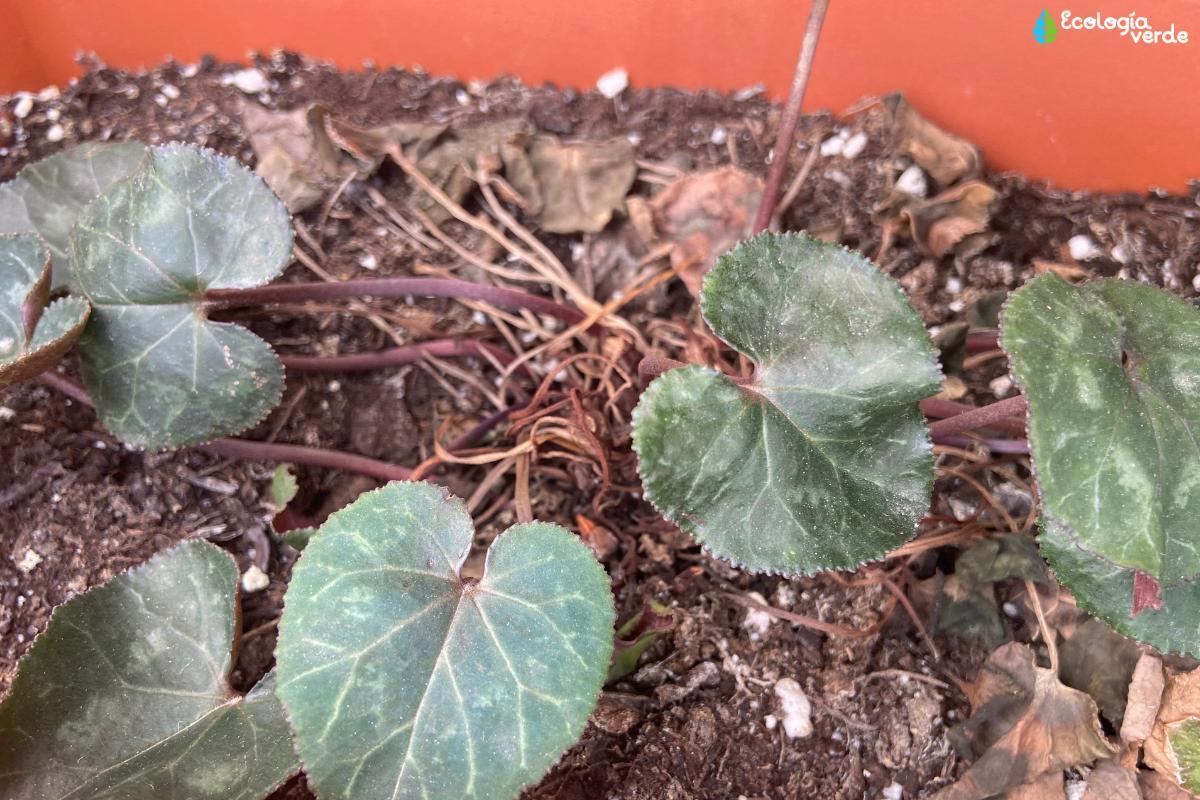Cyclamen Has Yellow Leaves


A cyclamen can have yellow leaves for various reasons, including excess humidity during its dormancy period, incorrect watering, high temperature and other causes. The solutions may vary depending on the cause, but placement, watering and soil are all important factors if you want to have a healthy sowbread plant.
Cyclamen is a very popular plant, especially when kept indoors. It stands out for its colorful flowers which bloom in winter, as well as its dark-colored leaves which are very aesthetically pleasing. When used outdoors, it is a good plant for ground cover. When it presents yellow leaves, it means it has a condition known as chlorosis. This reveals states of stress due to inadequate parameters in their care. thedailyECO explains more by looking at the reasons why cyclamen has yellow leaves and what solutions are available.
Excess humidity during dormancy
This is the main cause of yellow leaves on cyclamen, because excess moisture and watering causes rot. It is very common for this to happen because the cyclamen goes through dormancy during the summer. In its natural environment, the warm conditions and low humidity are not ideal for the species. It is a cold-weather plant, so it is adapted to reduce its biological processes during warmer periods.
To protect cyclamen in our home or garden, we have to replicate their natural conditions as closely as possible. When summer arrives, the plant will begin to decline and look like it is going to die. As a perennial, it won't die, but it will lay dormant. During this time it can Cyclamen Has Yellow Leaves and sometimes the leaves turn a little yellow. This can lead gardeners to increase irrigation.
Since the cyclamen is laying dormant, its biological processes slow down. This means it has less need for water. If we see the leaves are yellow, but feel saturated, then we are watering too much. We need to stop watering excessively during the summer. Spraying a little on their surface of the leaves once a week should be sufficient. As soon as autumn arrives, watering should continue as before. This means watering when the first inch of soil is dry.

Incorrect watering
As we have already seen cyclamen has a tendency to rot due to excess water. In addition to being careful during the dormant period, you must also give it a correct form of watering in the active growing months to prevent the leaves from turning yellow.
The best method for watering is to do it from the base, submerging the pot in a tray of water so that the plant takes only as much as it needs. It is important not to add too much to the container, because this can also cause waterlogging.
If you want to find some suitable plant pots for cyclamen which have adequate drainage, you can use the link below. These pots have a dish at the bottom to which you can add water for sub-irrigation watering.

High temperature
Cyclamen is a plant which thrives in cold weather. This means it is great at surviving cold spells and is relatively frost hardy. It also means that very hot weather can cause damage to the plant. This is a form of exposure which causes cyclamen leaves to turn yellow.
If the cyclamen leaves start to turn yellow because of high temperatures, you can take the indoor pots and place them outside at night. Do this 1-2 times per week and it should help solve the issue. If it gets too cold, you will need to check on it.
Excess sun
Cyclamen is an indoor plant, unless you live in a climate which is able to support this plant. The type of climate suitable to cyclamen requires an average ambient temperature of 50 ºF to 65 ºF (10 ºC to 18 ºC), moderate humidity and semi-shade. If it is placed under full sun exposure, cyclamen will not thrive and its leaves will eventually turn yellow.
If the plant has not died, you may be able to revive a cyclamen if it has been overexposed. If you have kept it outside in a very exposed area, you can place it in partial shade with filtered light or in complete shade. Ideally, you should bring it inside the house. The perfect location for cyclamen is next to a window that filters light. It is important that you do not keep it in too much darkness, because the flowers need light to bloom.

Lack of light
Although too much light makes a cyclamen's leaves turn yellow, too little will also be a problem. Chlorosis can be caused by lack of light. This is because light is necessary for chloroplasts to store the energy they will use to metabolize. If they lack this energy, they will not be able to complete their basic processes and the leaves will die. Again, we indicate that ideal cyclamen placement is next to a window where it receives filtered light.
Iron deficiency
If your cyclamen is iron deficient, the leaves will turn yellow due to iron chlorosis. Although this cause is not very common in cyclamen, it can happen and must be resolved as soon as possible. It is an indication of poor soil, so you will need to replenish nutrients. To do this, you can repot the plant in new soil that has suitable iron levels.
When the soil is fine except for iron levels, you can use iron chelates to reestablish its ideal composition. Use the link below to purchase iron chelate supplements for plants.

Pests that cause yellow leaves in cyclamen
Plant pests can cause significant damage to plants by extracting the vital fluids contained within plant cells, resulting in weakened foliage and the emergence of unsightly yellow spots. Identifying chlorosis as a result of pest infestation necessitates careful observation to detect the presence of minute insects. Among the common culprits targeting cyclamen plants are the notorious black weevil, aphids and thrips.
Dealing with pest infestations in cyclamens requires a multi-faceted approach, involving the removal of heavily infested plant parts and the application of eco-friendly insecticides to eradicate the pests.
In addition to these pests, cyclamen mites (Tarsonemus pallidus) pose a persistent threat. Remaining dormant until the arrival of April, when conditions become more favorable, these mites resurface to wreak havoc on vulnerable plants. Preferring areas of high moisture, they exacerbate the importance of maintaining optimal humidity levels.
Utilizing a method known as parthenogenesis, these mites reproduce rapidly by self-division, making them particularly challenging to control. Despite their resilience to conventional pesticides, diligent and consistent application is essential. Furthermore, the proactive removal of affected plant parts is advised to curb their spread and minimize damage.
Now we know what to do when our cyclamen has yellow leaves, we may want to learn more about other species of plant and the problems they face. Do so with our guides on why my rose leaves are turning yellow and why a kentia palm leaves turn brown.
If you want to read similar articles to Cyclamen Has Yellow Leaves, we recommend you visit our Plant care and cultivation category.
- Buczacki, S. (2000). Winter plants . Spain: Tursen Hermann Blume Editions.
- Royal Horticultural Society (n.d.) Cyclamen: Hardy . Available at: https://www.rhs.org.uk/plants/cyclamen/growing-guide









